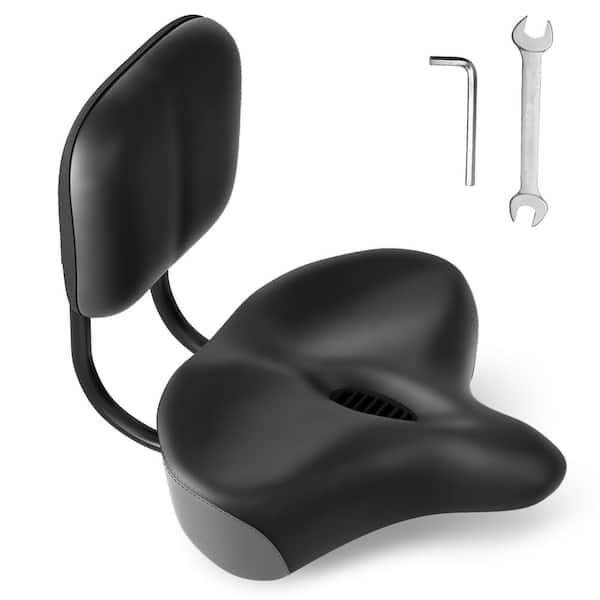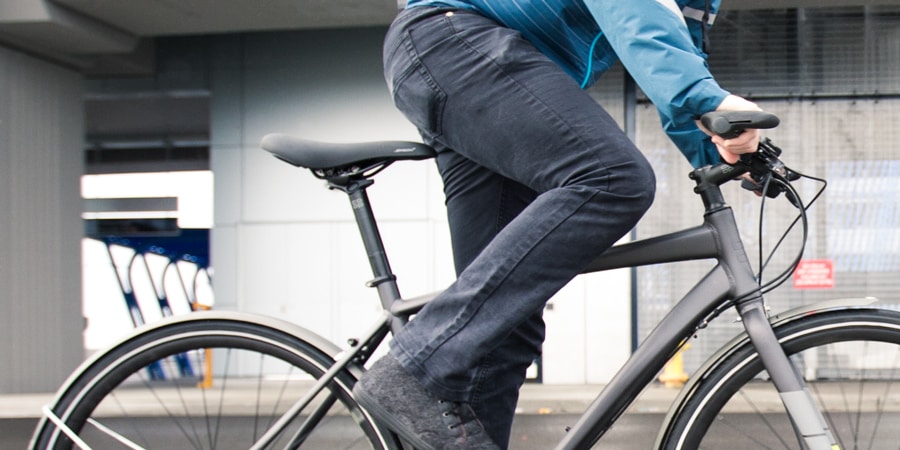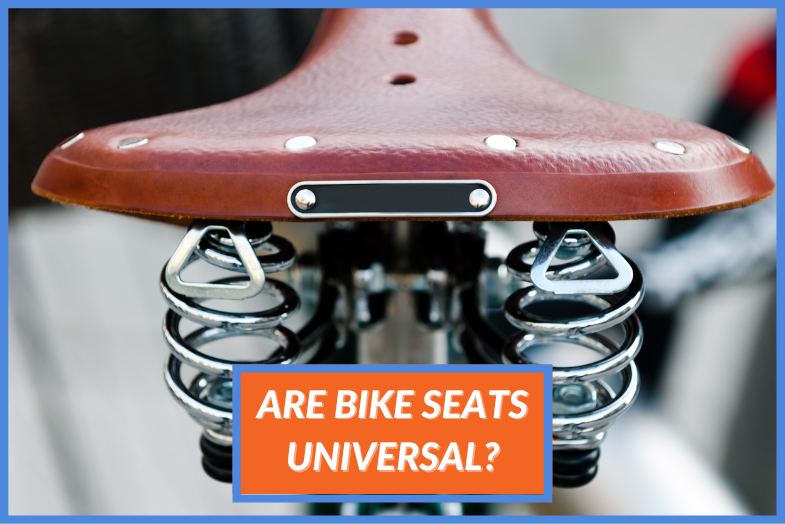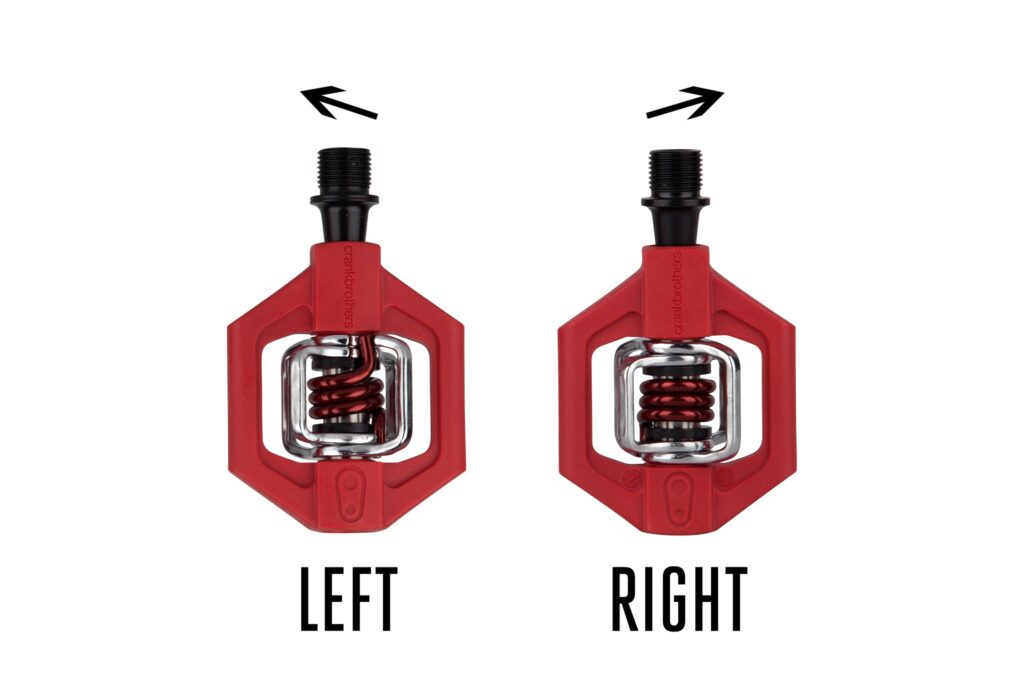Ever wondered if all bike seats are created equal? You’re not alone.
Whether you’re a seasoned cyclist or just starting your biking journey, choosing the right seat is crucial for comfort and performance. Imagine pedaling down a scenic trail, wind in your hair, only to be distracted by an uncomfortable seat. Frustrating, right?
That’s why understanding whether bike seats are universal can make or break your riding experience. Stick around as we delve into the ins and outs of bike seat compatibility, helping you make informed decisions that ensure every ride is smooth and enjoyable. Your perfect biking adventure starts here.
Standard Dimensions

Credit: www.homedepot.com
Bike seats vary in size and shape, impacting comfort and fit. Not all bike seats are interchangeable. Compatibility depends on bike type and mounting system.
When you’re diving into the world of biking, you might wonder if bike seats are universal. The truth is, while many seats can be swapped between bikes, they aren’t one-size-fits-all. Understanding the standard dimensions of bike seats is essential for finding the right fit for your ride.
Standard Dimensions: Width And Length
Bike seats come in various widths and lengths. The width impacts how comfortable you feel during long rides. A wider seat can offer more support, especially for casual cyclists. On the other hand, a narrower seat might be preferred by racers for its aerodynamic advantage.
Length is another key dimension. A longer seat can provide more space to adjust your position during different riding conditions. However, it’s crucial that the length suits your body size and riding style. Have you ever felt cramped on a seat that’s too short or struggled to reach the pedals because the seat is too long?
Standard Dimensions: Rail Spacing
The rail spacing of a bike seat often dictates compatibility with the seat post. Most modern bikes adhere to a standard rail width, making swapping seats relatively straightforward. However, some specialized bikes might have unique rail configurations.
Check the specifications of your bike and seat before assuming they will fit together. Have you ever made a purchase only to realize the parts don’t match? It’s a common pitfall that can be avoided with a quick measurement check.
Standard Dimensions: Material Considerations
Material choice affects comfort and durability. Common materials include foam, gel, and leather. Foam seats are lightweight and often less expensive, but gel seats provide extra cushioning for those long rides. Leather seats can offer a classic look and durability but might require more maintenance.
Choosing the right material can make a world of difference in your biking experience. Consider the climate you ride in—does moisture affect your seat’s longevity or comfort?
Standard Dimensions: Saddle Shape
Saddle shape can dramatically change your riding experience. Some seats have a rounded shape, while others are flat or have cutouts to relieve pressure. A rounded shape might be ideal for leisure cyclists, providing comfort and support, while a flat seat could benefit racers seeking speed.
Have you ever tried a different shape and felt the difference in pressure distribution? It’s fascinating how a simple change can enhance your ride.
When selecting a bike seat, remember that dimensions play a crucial role. Consider your body type and riding style before making a choice. Your comfort and performance depend on finding the right fit. What’s your perfect seat story?
Compatibility Factors

Credit: www.rei.com
When choosing a bike seat, compatibility matters. Not all bike seats fit every bike. Several factors determine if a seat will work for your bike. Understanding these factors helps you select the right seat. It’s important for comfort and safety.
Size Of The Seat Post
The size of the seat post is crucial for compatibility. Most bikes have a standard seat post size. Some bikes, though, have unique sizes. Measure the diameter of your seat post before buying a new seat. This ensures a proper fit.
Rail Type And Compatibility
The rail type affects seat compatibility. Most bike seats use two parallel rails. These attach to the seat post clamp. Some bikes have different rail designs. Check your bike’s rail type before purchasing a seat.
Seat Clamp Design
Seat clamp design can differ between bikes. Some clamps are built into the seat post. Others require a separate clamp. Ensure your seat matches your bike’s clamp design. This prevents installation issues.
Bike Type
The type of bike influences seat compatibility. Mountain bikes, road bikes, and hybrids have different needs. Each type may require a specific seat design. Choose a seat designed for your bike type.
Riding Style And Comfort
Your riding style affects seat choice. Casual riders need different seats than racers. Consider your comfort needs. A seat that’s too hard or soft can cause discomfort.
Selecting The Right Seat
:max_bytes(150000):strip_icc()/tl-trusted-most-comfortable-bike-seats--bb8c847c93a24ccaae7c39230229240a.jpg)
Credit: www.travelandleisure.com
Choosing a bike seat isn’t always straightforward. Not all bike seats fit every bike model. Check compatibility and comfort before purchasing. Each bike has specific requirements, so understanding what suits yours is essential for a smooth ride.
Selecting the right bike seat can make a world of difference in your cycling experience. It’s not just about comfort; it’s about finding the seat that complements your riding style and body type. A poorly chosen seat can lead to discomfort and even deter you from getting back on the saddle.
So, how do you choose the perfect one?
Understand Your Riding Style
Your riding style plays a crucial role in selecting the right bike seat. Are you a casual cruiser or an intense mountain biker? A wider, cushioned seat might suit leisurely rides, while a narrower, firmer seat can enhance performance for long-distance or competitive cycling. Think about how you typically ride and choose a seat that supports that activity.
Consider Your Anatomy
Anatomy matters when picking a bike seat. Seats come in various shapes and sizes to accommodate different body types. Look for a seat that aligns with your sit bones for optimal comfort. Many bike shops offer measurement tools to help you find the right fit. Have you ever thought about how a small adjustment can make a big difference in comfort?
Material And Padding
The material and padding of a bike seat can affect your ride quality. Leather seats offer durability and a classic look, while synthetic materials can provide weather resistance. Padding, whether gel or foam, adds comfort but too much can cause chafing. Balance is key. What kind of terrain do you usually cycle on? This might influence your material choice.
Test Before You Buy
Testing a bike seat before purchasing can save you from future discomfort. Many bike shops allow you to test seats on your bike. Take it for a spin to feel how it supports you in motion. Does the seat feel right? Your comfort should be the deciding factor.
Adjustability And Installation
Some seats offer adjustable features to better fit your bike and body. Consider a seat with adjustable rails for better positioning. Installation should be straightforward, but if you’re unsure, ask a professional for help. How much are you willing to adjust for the perfect fit?
Selecting the right seat might seem overwhelming at first, but breaking it down into these elements can simplify the process. Each choice you make should reflect your personal needs and riding habits. Happy cycling!
FAQs
Do All Seats Fit All Bikes?
Not all seats fit all bikes. Bike seats vary in size and design. Compatibility depends on the bike’s seat post diameter and mounting system. Always check specifications or consult your bike’s manufacturer for compatibility. Proper fit ensures safety and comfort.
Can I Replace My Bike Seat With Any Seat?
Yes, you can replace your bike seat. Ensure it is compatible with your bike’s seat post and clamp.
Are Bicycle Seat Posts Universal?
Bicycle seat posts are not universal. They come in various diameters and lengths. Ensure compatibility with your bike frame. Measure your current seat post or check the manufacturer’s specifications to find the correct size. Always choose the right seat post to ensure safety and comfort while riding.
Conclusion
Bike seats are not all universal. Compatibility varies greatly among brands. Different bikes need specific seats. Always check fit before purchase. Measure your bike’s seat post. Compare with seat dimensions. Doing this prevents discomfort. A snug fit makes biking enjoyable.
Ask experts if unsure. They help find the right seat. This ensures a comfortable ride. Remember, a happy ride starts with a good seat. Choose wisely for the best experience. A perfect seat transforms your cycling journey. Enjoy every pedal!



